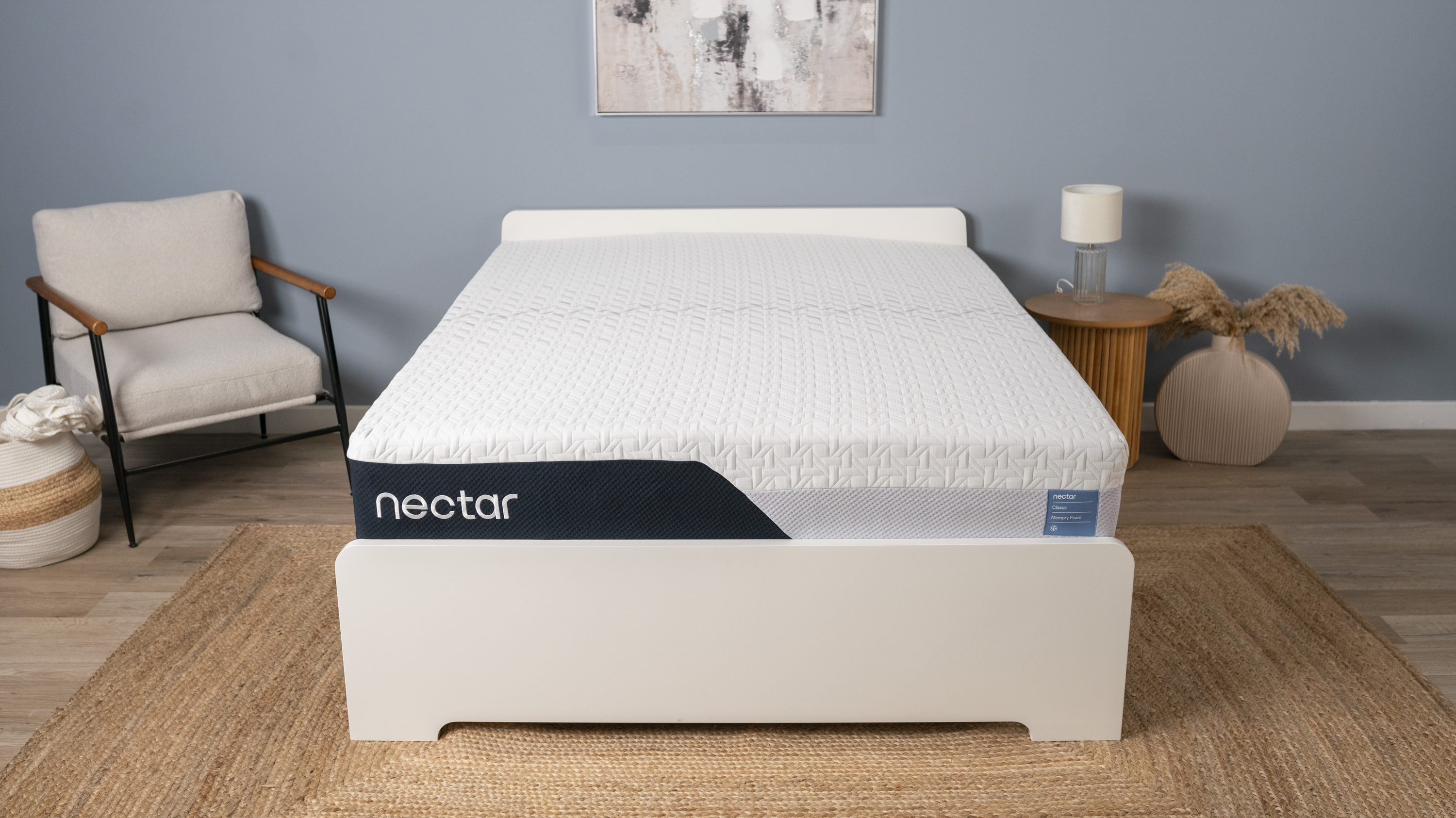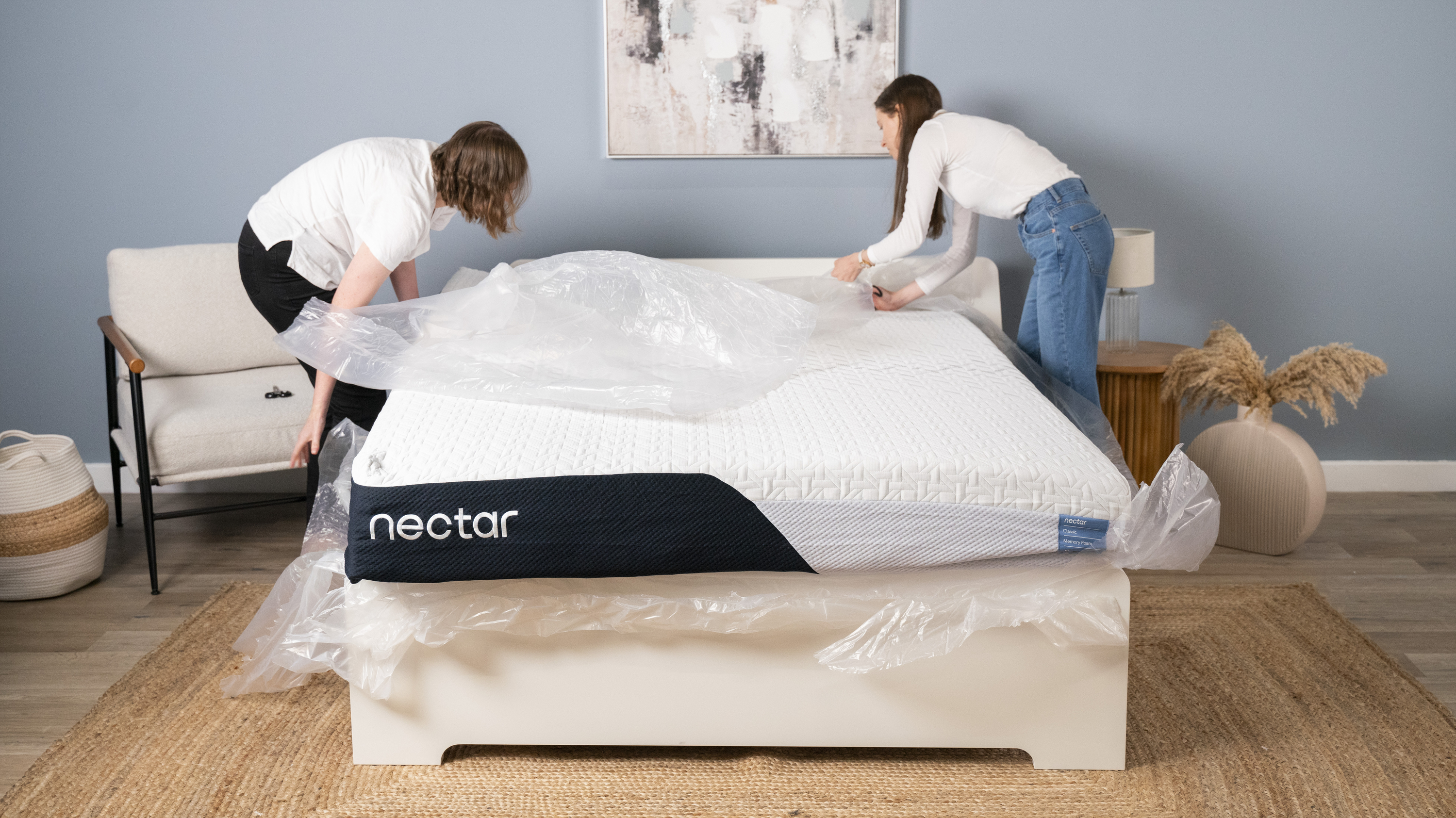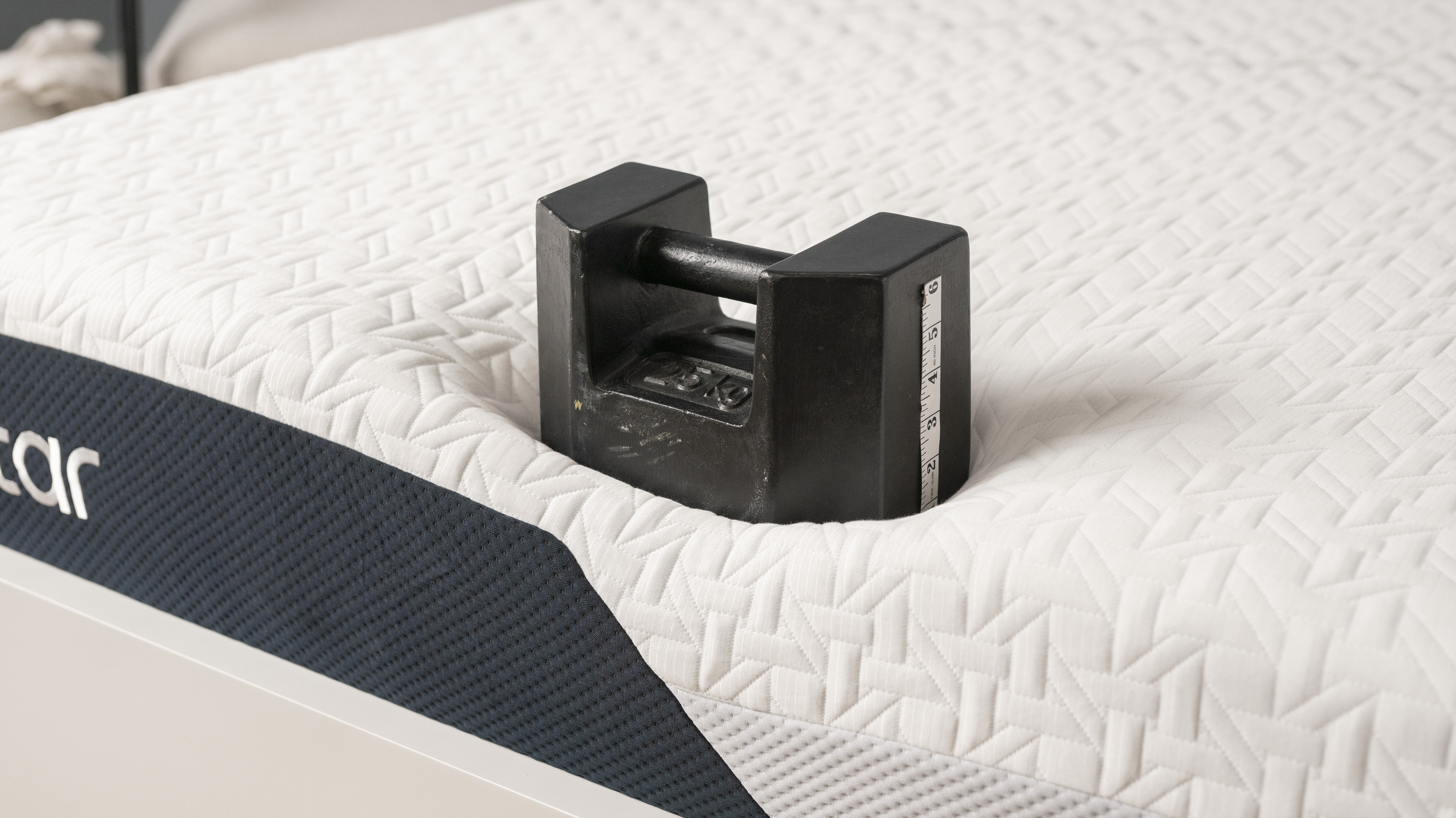Are memory foam mattresses worth it or a waste of money? I’m a sleep writer — here’s my take
If you're thinking of buying a memory foam mattress, read this first

All-foam beds have become some of the most popular mattresses on the market, thanks to their cushioned pressure relief and variety of price points. But if you're thinking of buying one, you might be wondering if memory foam mattresses are worth investing in?
Here, we'll walk through what a memory foam mattress is, what they're good for, how much they cost plus the benefits and drawbacks. If you decide this type of mattress is right for you, you'll find our top recommendations for all sleep styles and budgets (all tested on and reviewed by our sleep experts) in our best memory foam mattress guide. And for our overall favorite mattresses, check out this year's best mattress guide.
What is a memory foam mattress?
Memory foam mattresses have become one of the most popular mattress types in recent years. These all-foam beds feature layers of contouring memory foam, a material originally designed by NASA and later adopted for use in furniture.

As a general rule, memory foam mattresses are known for their dense cushioning, which contours to the body to provide comfort and pressure relief. Often recommended for side sleepers,
Often recommended for side sleepers, memory foam is known for its contouring 'hug' feel. It's often used as a cushioning layer in some of the best hybrid mattresses, but when we talk about memory foam mattresses, we're referring to mattresses made entirely of foam.
Are memory foam mattresses any good?
Memory foam mattresses are one of the most popular types of beds thanks to their deep contouring and impressive pressure relief. The foam 'hugs' the body, slowly adapting to your shape until your joints are cushioned and cradled to reduce aches. The slow moving foam is also great for bed sharers, as it absorbs motion rather than allowing movement to travel from one side of the mattress to the other.
However, this 'hug feel isn't for everyone, particularly sleepers who like to move position easily during the night. The close contouring of memory foam also has a tendency to hold onto heat, making all-foam beds a worse choice for hot sleepers. Cheap memory foams can also have a 'quicksand' effect, leaving some sleepers worried they're about to sink through the mattress.
How much do memory foam mattresses cost on average?
There's a memory foam mattress to suit almost every budget, from ultra-cheap options to luxurious premium choices. Memory foam mattresses are, on average, cheaper than hybrid beds and latex mattresses. However, if you want a high quality and durable memory foam mattress it's best to look beyond budget options.
Memory foam dominates our best cheap mattress guide, with budget beds from brands such as Zinus and Siena costing around $350 to $500 for a queen. While these beds can be comfortable, they tend to have a few common downsides. Primarily, overheating and weak edge support. Budget beds are likely to lack longevity as well. After a few years, expect to see sagging.
Upgrade to a mid-range memory foam mattress, such as those by Nectar and Sealy Chill, and you can expect to pay around $650 to $900 for a queen. These mattresses often have a more durable build than their cheaper counterparts, although overheating can still be an issue.

Premium memory foam mattresses can cost several thousand dollars, such as those from luxury brands Tempur-Pedic and Saatva. So what makes these mattresses worth the money? First off, the feel. Premium mattresses often user denser foams to provide even better pressure relief and support.
These all-foam beds should also have enhanced durability. Even with regular use, you shouldn't see sinking or sagging until after many years of restless nights. A premium memory foam mattress might also come with special features, such as integrated cooling tech, added lumbar support, or sturdy edges.
Memory foam is also used in many of the best mattress toppers. These are thin layers that sit on top of your bed to adjust the comfort level. A memory foam mattress topper will typically make the sleep surface softer for less than the cost of a brand new bed. Not sure which is right for you? Check out our guide to memory foam mattresses vs memory foam mattress toppers.
Are memory foam mattresses worth it or a waste of money?
The benefits of a memory foam mattress
✅ They have excellent pressure relief: As a general rule, memory foam mattresses are known for their body contouring pressure relief, which can ease aches and pains. This also makes memory foam beds some of the best mattresses for side sleepers.
✅ They have a body-hugging feel: Memory foam mattresses contour to the body, creating a 'hug' effect that cradles you as you sleep. This isn't for everyone (which I'll delve into below) but if you like to sink into your bed, opt for a memory foam.
✅ They're great for couples: Press and release a memory foam mattress and it will only slowly return to its original shape. This slow response makes memory foam fantastic for couples, as it absorbs motion so when one person moves, the other isn't disturbed.
The drawbacks of a memory foam mattress
❌ They can sleep hot: The dense build of memory foam can cause hot air to get trapped in the mattress, potentially leading to overheating. If you're a hot sleeper, you're better off looking at breathable hybrid beds. Some memory foam beds are considered among the best cooling mattresses, but they need to be packed with cooling tech.
❌ They can have weak edges: It's hard to create sturdy edge support using nothing but foam, which is why all-foam mattresses can be weaker at the sides. This is an issue if you have limited mobility and need to push against the mattress to get in and out of bed; the sinking sides can feel unstable.
❌ They're prone to off-gassing: Mattress off-gassing is the chemical smell that can occur when unboxing a mattress. It's particularly prevalent in boxed memory foam mattresses, and can take a while to dissipate. Mattress off-gassing isn't harmful but if you're sensitive to smell, it can make it hard to sleep.
Sign up to get the BEST of Tom's Guide direct to your inbox.
Get instant access to breaking news, the hottest reviews, great deals and helpful tips.

Ruth is a staff writer at Tom’s Guide, covering all things mattress and sleep. She has a deep interest in the link between sleep and health, and has tried enough mattresses to know the right bed really can make a difference to your wellbeing. At Tom’s Guide she writes to help people sleep better, from how-tos to the latest deals to mattress reviews, and has interviewed an array of specialists who share her passion. Before joining the team at Tom’s Guide, Ruth worked as a sleep and mattress writer for our sister website, TechRadar.
-
cuvtixo Hmmm, I wish this had more of an "exposé" tone, because my take is that some foam mattresses are among the cheapest, but it's also a material in the most expensive. #1 is $350, #2 is $3,600. That's a pretty big discrepancy. Why? It's fine there's ordinary pros and cons which seem based on personal preference, but is #1 made by exploited Oompa loopa's? More seriously are they all of them Chinese manufactured? Time throw caution to the wind and offend some possible vendors/sponsors! Does the outgassing pose a health problem? There's at least controversy there!Reply
